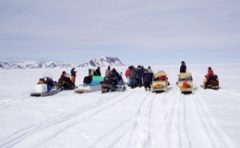 It is highly recommended that all students and supervisors working in remote northern field locations have access to emergency communication devices, and understand the protocols for when and how to use them. It is important to identify what is the best option given a particular field site, and any necessary supporting logistics, well in advance of any field work. This should also be one of the considerations included when completing your Field Activity Safety Plan (available here).
It is highly recommended that all students and supervisors working in remote northern field locations have access to emergency communication devices, and understand the protocols for when and how to use them. It is important to identify what is the best option given a particular field site, and any necessary supporting logistics, well in advance of any field work. This should also be one of the considerations included when completing your Field Activity Safety Plan (available here).
Some common options include:
- Satellite Phone (supplied with adequate phone minutes and/or data transfer amounts for the duration of field work)
- Satellite Communicator (supplied with adequate data credits for the duration of field work – eg. Zoleo or Inreach)
- Personal locator beacon (only capable of sending an emergency distress signal, usually received by a centralized emergency response organization to coordinate logistics as needed)
- Starlink (provides Internet access globally)
These devices may be used for regular communication with supervisors or logistical support operators (e.g., PCSP, the CCGS Amundsen), or they may be designated specifically for emergency use (i.e., in case of medical emergency or need for evacuation). Some of these devices will automatically track the user with a GPS (e.g., satellite communicators).
Recommendations
Please discuss the most appropriate option for you, and/or your research team, with your supervisor. Make sure that the device you choose will work in your field location (some satellites won’t reach very high latitudes). If you would like to receive specific recommendations for emergency communications/locating providers, please contact the Northern Research Committee Chair directly.